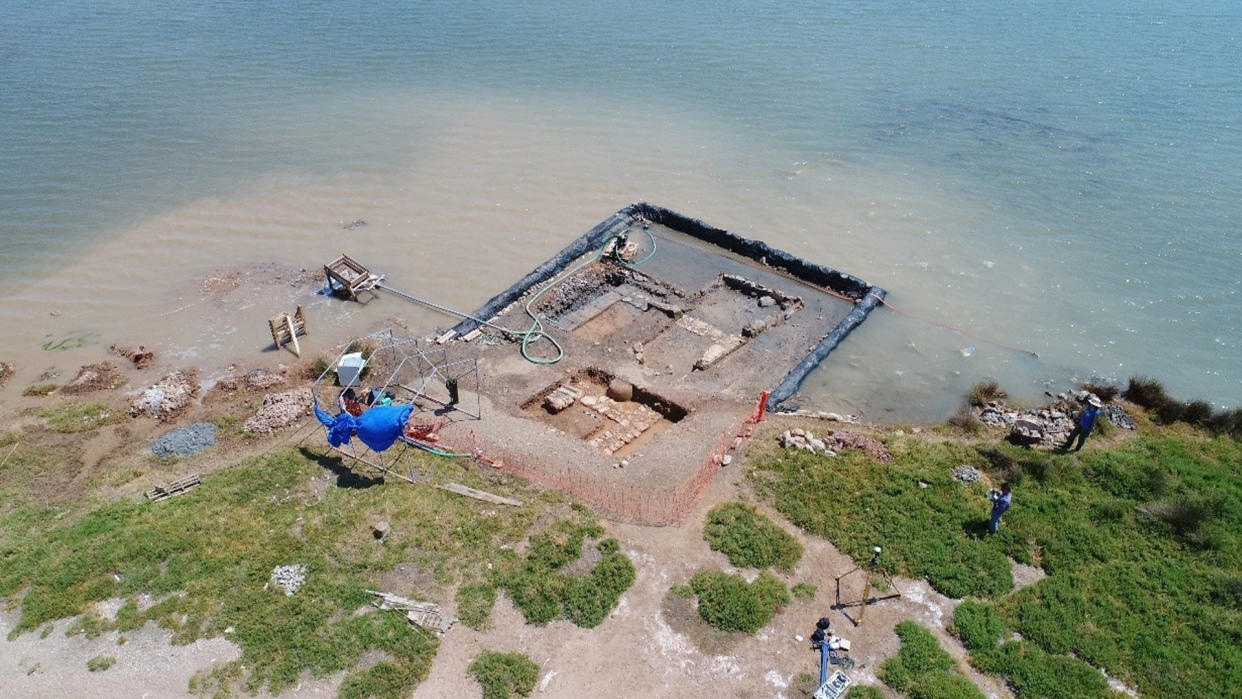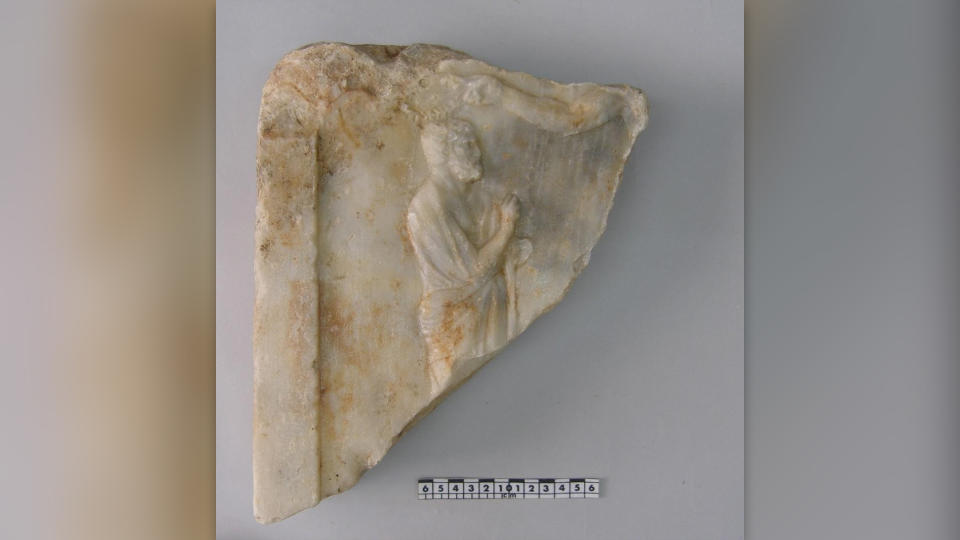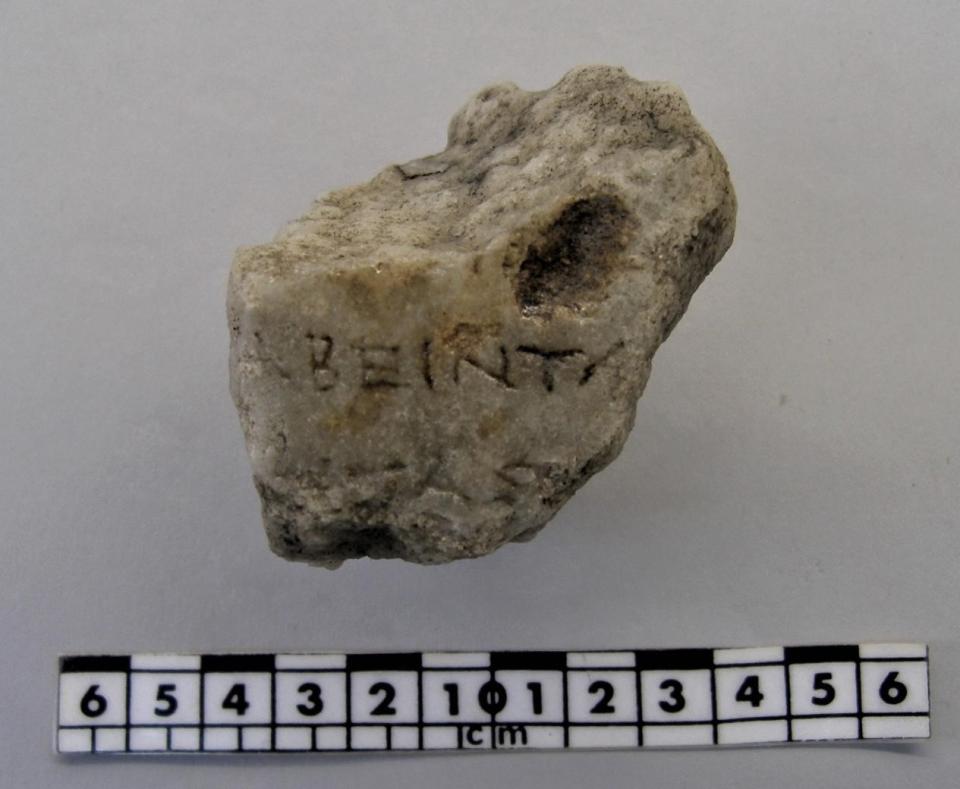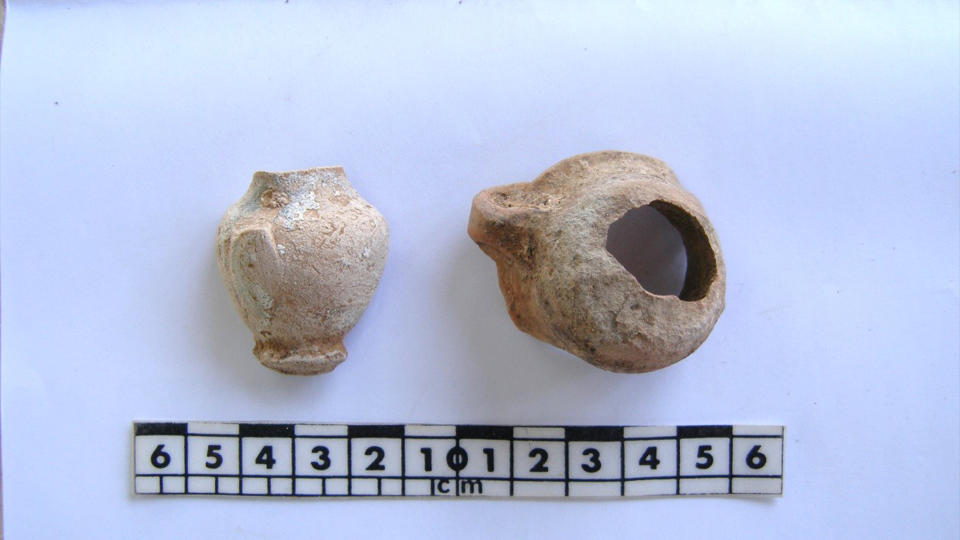Depiction of Trojan War hero Ajax found in 1,800-year-old submerged building in Greece

- Oops!Something went wrong.Please try again later.
Underwater archaeologists investigating Salamis, a tiny island just east of Athens, Greece, have discovered a large public building they say is key to understanding the history of the ancient city.
Salamis is best known for its role in the Persian Wars, which Greece fought against the Achaemenid (Persian) Empire from 499 to 449 B.C. During the second Persian invasion, in 480 B.C., Xerxes the Great initially gained a victory at the Battle of Thermopylae, but he was decisively beaten later that year by the Greek navy at the Battle of Salamis.
Related: 10 epic battles that changed history
The classical city on the island of Salamis appears to have crumbled by the second century A.D., when Greek geographer Pausanias wrote, "There are still the remains of a marketplace, a temple of Ajax and his statue in ebony." Salamis once boasted the Trojan War hero Ajax as its most famous native son.
Archaeologists have been investigating the sunken remains of the classical city of Salamis for several years; in 2021, they discovered the seawall that served as the fortification system for the ancient city.
Now, they have announced the discovery of a massive building called a stoa, a covered walkway that often surrounded an open public space such as a market or a square.
The stoa at Salamis is about 20 feet (6 meters) wide and 105 feet (32 m) long, with only one or two layers of stone remaining in height. Its interior includes a series of six or seven rooms, but archaeologists have not been able to investigate all of them. One room, which was about 15.4 by 15.4 feet (4.7 by 4.7 m), had a large storage pit in it.
Artifacts found in the stoa include pottery from several time periods, much of which may have simply drifted in from the sea. But remains of the stoa's classical past (fourth century B.C.) were also discovered in the building's foundations, including clay objects such as amphora stoppers, a couple dozen bronze coins, and fragments of marble objects.



RELATED STORIES
—2,800-year-old figurines unearthed at Greek temple may be offerings to Poseidon
The upper portion of a marble stele — an upright stone slab with a design, often used as a burial marker in ancient Greece — is particularly notable. On the stele, a standing, bearded man is being crowned by someone with a muscular right hand — possibly the hero Ajax himself. A fragment of a marble column with part of an inscription was also preserved.
In a translated statement, the Greek Ministry of Culture noted that the ruins of Salamis are exactly as Pausanias described them nearly two millennia ago. "The identification of the stoa is a very important new element for the study of the topography and residential organization of the ancient city," they said.

